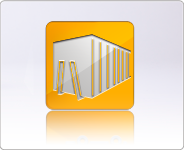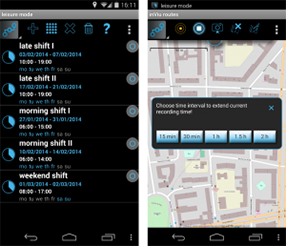 Settings
How it works is each mobile phone’s inViu routes settings would be
configured to automatically track during the employee’s work hours. You can
also import predefined leisure mode templates to save time during setup. Create
several templates to easily switch between different shifts. After the desired
template is selected, the employer would then lock the phone’s inViu routes
settings with a security code. This way the employee cannot change the ‘auto
start’ settings.
Overtime
A great feature of leisure mode is the extension verification message. The
user can choose to extend tracking time when working overtime. This is
important for companies that use the inViu timestamp as their employees’ work
hours for payroll. The message appears at the end of every scheduled shift for
the employee to confirm the worked hours or to extend them.
Leisure mode is just one of the many updates made to inViu routes to turn it
into a business-friendly tool for a cost-effective tracking system.
Learn about all the other useful plugins here or download the app from Google
Play.
Settings
How it works is each mobile phone’s inViu routes settings would be
configured to automatically track during the employee’s work hours. You can
also import predefined leisure mode templates to save time during setup. Create
several templates to easily switch between different shifts. After the desired
template is selected, the employer would then lock the phone’s inViu routes
settings with a security code. This way the employee cannot change the ‘auto
start’ settings.
Overtime
A great feature of leisure mode is the extension verification message. The
user can choose to extend tracking time when working overtime. This is
important for companies that use the inViu timestamp as their employees’ work
hours for payroll. The message appears at the end of every scheduled shift for
the employee to confirm the worked hours or to extend them.
Leisure mode is just one of the many updates made to inViu routes to turn it
into a business-friendly tool for a cost-effective tracking system.
Learn about all the other useful plugins here or download the app from Google
Play. Leisure mode for mobile phones with the inViu routes GPS tracking app – great for switching between business and personal use
Leisure mode for mobile phones with the inViu routes GPS tracking
app – great for switching between business and personal use
We’re going to put the spotlight on one of
inViu routes newest features, the leisure mode.
Now with the ability to turn mobile phones into GPS tracking devices by
installing the free app, it does not make sense to track the mobile phone’s
movement 24 hours a day. Just how it sounds, the leisure mode allows users to
use their work phone for personal use outside of working hours without being
monitored. This feature creates a win-win situation for both the employer and
employee as it increases efficiency in managing mobile workers and allows these
workers to use one smartphone instead of carrying a separate phone for private
use.
 Settings
How it works is each mobile phone’s inViu routes settings would be
configured to automatically track during the employee’s work hours. You can
also import predefined leisure mode templates to save time during setup. Create
several templates to easily switch between different shifts. After the desired
template is selected, the employer would then lock the phone’s inViu routes
settings with a security code. This way the employee cannot change the ‘auto
start’ settings.
Overtime
A great feature of leisure mode is the extension verification message. The
user can choose to extend tracking time when working overtime. This is
important for companies that use the inViu timestamp as their employees’ work
hours for payroll. The message appears at the end of every scheduled shift for
the employee to confirm the worked hours or to extend them.
Leisure mode is just one of the many updates made to inViu routes to turn it
into a business-friendly tool for a cost-effective tracking system.
Learn about all the other useful plugins here or download the app from Google
Play.
Settings
How it works is each mobile phone’s inViu routes settings would be
configured to automatically track during the employee’s work hours. You can
also import predefined leisure mode templates to save time during setup. Create
several templates to easily switch between different shifts. After the desired
template is selected, the employer would then lock the phone’s inViu routes
settings with a security code. This way the employee cannot change the ‘auto
start’ settings.
Overtime
A great feature of leisure mode is the extension verification message. The
user can choose to extend tracking time when working overtime. This is
important for companies that use the inViu timestamp as their employees’ work
hours for payroll. The message appears at the end of every scheduled shift for
the employee to confirm the worked hours or to extend them.
Leisure mode is just one of the many updates made to inViu routes to turn it
into a business-friendly tool for a cost-effective tracking system.
Learn about all the other useful plugins here or download the app from Google
Play.
 Settings
How it works is each mobile phone’s inViu routes settings would be
configured to automatically track during the employee’s work hours. You can
also import predefined leisure mode templates to save time during setup. Create
several templates to easily switch between different shifts. After the desired
template is selected, the employer would then lock the phone’s inViu routes
settings with a security code. This way the employee cannot change the ‘auto
start’ settings.
Overtime
A great feature of leisure mode is the extension verification message. The
user can choose to extend tracking time when working overtime. This is
important for companies that use the inViu timestamp as their employees’ work
hours for payroll. The message appears at the end of every scheduled shift for
the employee to confirm the worked hours or to extend them.
Leisure mode is just one of the many updates made to inViu routes to turn it
into a business-friendly tool for a cost-effective tracking system.
Learn about all the other useful plugins here or download the app from Google
Play.
Settings
How it works is each mobile phone’s inViu routes settings would be
configured to automatically track during the employee’s work hours. You can
also import predefined leisure mode templates to save time during setup. Create
several templates to easily switch between different shifts. After the desired
template is selected, the employer would then lock the phone’s inViu routes
settings with a security code. This way the employee cannot change the ‘auto
start’ settings.
Overtime
A great feature of leisure mode is the extension verification message. The
user can choose to extend tracking time when working overtime. This is
important for companies that use the inViu timestamp as their employees’ work
hours for payroll. The message appears at the end of every scheduled shift for
the employee to confirm the worked hours or to extend them.
Leisure mode is just one of the many updates made to inViu routes to turn it
into a business-friendly tool for a cost-effective tracking system.
Learn about all the other useful plugins here or download the app from Google
Play. 


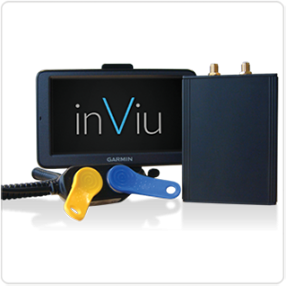
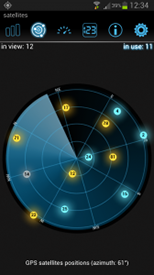 Before we dissect GPS’s role in the world today, let’s talk about what
exactly GPS is and how it works. The Global Positioning System (GPS) is
actually run by the US Department of Defence, a project that started in 1973 in
search of a better navigation system. Originally developed for military use,
the system consists of 24 satellites travelling 19,300 km above the earth in
controlled orbits twice a day. These satellites are built to last 10 years and
are replaced after this time by a new one that gets launched into orbit.
To access GPS data one must use a GPS receiver. The receiver must be locked
onto the signal of at least three satellites to calculate a 2D position
(latitude and longitude) and have the ability to track movement. With four or
more satellites, the receiver can determine a user’s altitude, making it a 3D
position. This process of locating is called trilateration, where the
intersection of three sphere surfaces determines a user’s location. GPS can
determine location, velocity, time, speed, bearing, trip distance, distance to
destination, sunrise, and sunset.
Before we dissect GPS’s role in the world today, let’s talk about what
exactly GPS is and how it works. The Global Positioning System (GPS) is
actually run by the US Department of Defence, a project that started in 1973 in
search of a better navigation system. Originally developed for military use,
the system consists of 24 satellites travelling 19,300 km above the earth in
controlled orbits twice a day. These satellites are built to last 10 years and
are replaced after this time by a new one that gets launched into orbit.
To access GPS data one must use a GPS receiver. The receiver must be locked
onto the signal of at least three satellites to calculate a 2D position
(latitude and longitude) and have the ability to track movement. With four or
more satellites, the receiver can determine a user’s altitude, making it a 3D
position. This process of locating is called trilateration, where the
intersection of three sphere surfaces determines a user’s location. GPS can
determine location, velocity, time, speed, bearing, trip distance, distance to
destination, sunrise, and sunset.
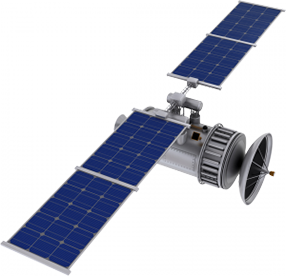 As you can see, this wealth of information has benefited countless
industries, such as
As you can see, this wealth of information has benefited countless
industries, such as 